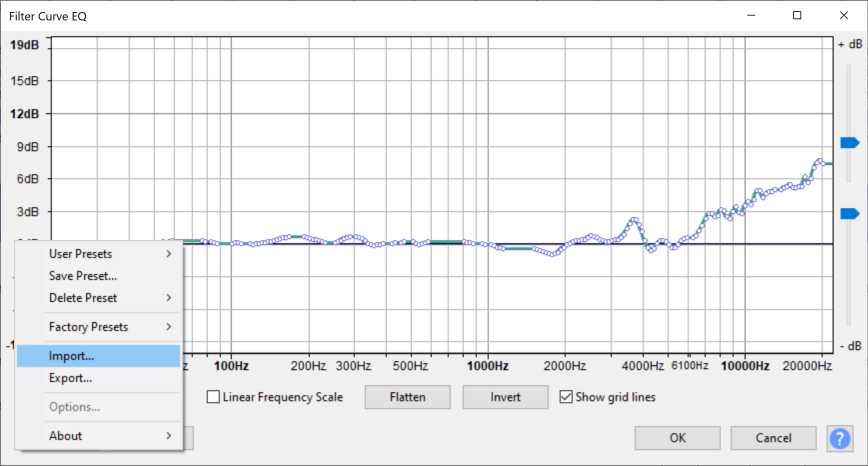dayton2audacity v1.2.0
dayton2audacity
convert dayton audio mic calibration files to audacity filter curve eq presets
installation
you can download source and run node dayton2audacity.js as usual, or do npm install -g dayton2audacity to get a dayton2audacity command.
uninstall for the latter option is npm uninstall -g dayton2audacity.
usage
dayton2audacity [ infile [ outfile ] ] [ -r <dbV> ]
infile name of dayton audio calibration file (stdin if missing)
outfile name of audacity filter curve preset (stdout if missing)
-r <dbV> if specified, apply baseline gain from calibration file,
where <dbV> is the *negative* of the design response given
on the product page for your mic. e.g. the emm-6 has a
design sensitivity of -40 dbV @ 1000 hz into 1 kohm so if
you want to correct to that baseline, use "-r 40".download calibration file for your dayton audio mic from http://support.daytonaudio.com/MicrophoneCalibrationTool
run this program to create an audacity filter curve eq preset text file
in audacity: effect → filter curve → manage → import, then load the file (newer versions of audacity label the button "presets & settings" instead of "manage").

notes
reference level
on the product pages for dayton's mics, a design sensitivity dbV level is given that maps response voltage at
some frequency and input impedence to absolute sound pressure. in the calibration file, the actual response at
this frequency and input impedence is given. the -r option can be used if you want to use the value in the
file to apply a global baseline correction factor to bring the observed sensitivity in line with the design
sensitivity.
however, as useful as this sounds, in many cases it isn't necessary: in particular, if you're recording audio with these mics and adjusting your input gains on the fly, e.g. you've got a tone generator that you're calibrating gains with or you're eyeballing it, then you don't actually want this correction factor, since you're basically applying your own. it's only really useful if you're reading actual voltages from the mic as-is.
audacity limitations
audacity silently places a limit on the number of points in the filter curve but this program won't warn if the limit is exceeded. so if your filter curve in audacity has a suspicious lack of points on the high frequency end, that's probably what happened. however, this program tries to minimize the number of points by removing consecutive frequency entries with the same gain values, and it usually seems to be ok.
windows + bash + pipes
if you happen to be running this as node dayton2audacity.js (i.e. not installed) in bash on windows and piping the output to something else, and you get an error stdout is not a tty, run it with "node.exe" instead of just "node".
this is weirdness that i can't explain, but it applies to all applications run from bash on windows (see this).